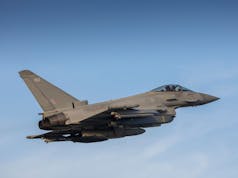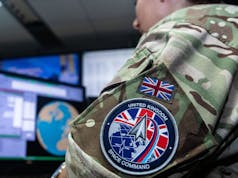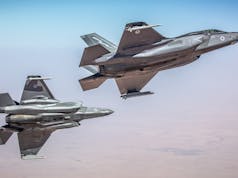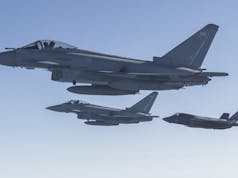For the last couple of years, the UK Defence Journal had been trying to track down the ‘missing 12’ of 50 aircraft. They have now been ordered.
The confirmation comes after a support contract for a “fleet of 50” AH-64E Apache aircraft was awarded to Boeing.
According to the contract notice:
“The Boeing Co., Mesa, Arizona, was awarded a $191,858,915 cost-no-fee, cost-plus-fixed-fee, firm-fixed-price contract for post-production support services and warehouse management services for the United Kingdom AH-64E Apache helicopter fleet of 50 aircraft and three Longbow crew trainers. Bids were solicited via the internet with one received. Work will be performed in Mesa, Arizona, with an estimated completion date of Dec. 31, 2024. Fiscal 2020 Foreign Military Sales (United Kingdom) funds in the amount of $191,858,915 were obligated at the time of the award. U.S. Army Contracting Command, Redstone Arsenal, Alabama, is the contracting activity (W58RGZ-20-C-0014).”
For the last couple of years, we’ve been tracking the progress of the ‘missing 12’ Apache helicopters. In August 2019, Former Parliamentary Under-Secretary of State for Defence, Stuart Andrew, said in response to this question from Andrew Rosindell, the Member of Parliament for Romford:
“To ask the Secretary of State for Defence, when her Department plans to complete its order for all 50 AH-64E Apache attack helicopters.”
Stuart Andrew responded:
“The order for all 50 Apache AH-64E attack helicopters was placed with the US Government in June 2016 and deliveries are planned to be complete by early 2024. The US Government manages the timing of subcontracts to support the required aircraft delivery schedule.”
No such order was placed, a commitment to 50 was made but only 38 were actually ordered at the time.
So, I asked the Ministry of Defence the following:
I would like to know when all 50 Apache AH-64E Guardian helicopters were ordered and if not all 50 have yet been ordered, when the final order will be made and for how many aircraft?”
The response to my Freedom of Information request is as follows:
“Under a Foreign Military Sales (FMS) case signed in June 2016, the UK MOD placed an order with the United States Government (USG) for 50 AH-64E Apache helicopters. Currently, the USG has ordered 38 aircraft to meet the UK requirement and will order the remaining 12 at the optimum time to meet our required delivery schedule. Under Section 16 of Act (Advice and Assistance), it may be helpful to know that, under the FMS process, the USG places orders for aircraft from the manufacturer (Boeing) in time to meet the MOD’s required delivery schedule. The USG will use their buying power, leveraging the US Army’s requirements and that of other international customers, to negotiate the best possible price and therefore achieve best value for money. The required delivery schedule remains unchanged from that agreed in June 2016.”
Then, in January this year, we reported that Boeing and the U.S. Army finalised orders from three nations to provide their armed forces with the new AH-64E Apache.
According to a release from Boeing at the time:
“Boeing and the U.S. Army have finalized orders from three nations to provide their armed forces with the new, more capable AH-64E Apache model. The contracts are for the remanufacture of 47 existing AH-64D Apaches. The total combined value of the orders is more than $560 million.”
The Ministry of Defence did not comment on whether this specific order included the last 12 for the UK but after speaking to them, we’ve been told that all 50 are under now contract which makes the above the likely order as no other Apache related procurement contracts have been published recently.
While the UK earlier said it had committed to ordering all 50, it was late in doing so. In July 2017, Harriett Baldwin, then Under Secretary of State for Defence Procurement said:
“The Ministry of Defence is buying 50 Apache AH-64E helicopters from the US Government under a Foreign Military Sales arrangement. The US has ordered the first 38 of the helicopters as part of its own larger purchase, under a multi-year contract with Boeing. This ensures we can take advantage of economies of scale and secure best value for the UK taxpayer, while procuring a vital capability for the UK. We expect the remaining 12 helicopters to be incorporated within the contract by the end of the year.“
It’s now 2020 and the order has been placed.













Now that’s a relief. Don’t know enough about our rotary wing capabilities to know if that’s enough, but a 30% increase in order size (38 to 50) is nothing to scoff at. Kudos to you fellas for so doggedly investigating this
The Apache fleet was 67, with 48 in 2 Regiments ( 3 and 4 AAC ) each of 3 Squadrons of 8 Apache. Plus a Ops training squadron, and the OCU.
Currently 3 and 4 AAC only have 2 squadrons each, plus the ops training squadron.
The cynical side of me forsees the Mod cutting one regiment, putting the regiments squadrons with the other regiment, and saying no loss of capability as it’s now a 4 squadron regiment, rather than 2.
They will also probably say it is a “Centre of Excellence” ( another trendy buzzword they use when cutting and rationalizing assets into 1 place.)
While this order is welcome, and however more capable, fact is 67 have reduced to 50. When the helicopters are as cheap as chips and could be ordered in greater numbers by tagging onto the US order, as Pacman often states.
And each of our 4 brigades should have their own squadron assigned. In reality, 2 squadrons support 3 UK Division ( 3 AAC ) and 2 Squadrons ( 4 AAC ) support 16AA, UKSF, and 3 Cdo bde.
It is not enough.
May be the problems training enough AAC pilots.
One always has to remember the law of thirds too, particularly when it comes to aircraft; only 16 aircraft available for combat duty at any one time seems to me rather light. I’m not sure how long these are expected to serve, but that number could further reduce if we want to put some of that order of 50 into long-term storage to replace airframes somewhere down the line.
Our original number of 67 aircraft, which you helpfully reminded me about, would seem to me a minimum: 1-7 in long-term storage, with 60 active. 20 rather than 16 doesn’t seem like a great increase in combat available aircraft, but it’s 20% availability improvement.
Your point about training is likely correct, although I can’t imagine many people passing up the opportunity to fly an Apache! It’s open to enlisted ranks too, isn’t it?
I don’t believe the law of thirds applies to aircraft? Though I may be mistaken.
For fast jets, yes. I don’t think it’s the same for helicopters and large fixed wing aircraft though as they don’t have the same stresses put onto the airframes that a Typhoon would.
The law of thirds is ships.
Availability for missions of combat aircraft is seen as good if its 80%.
They are not cheap as chips.
No Robert, of course not. What I meant was what we’ve read of the price we are getting by joining in the large US order.
Compared to the 130 Typhoon or F35 they are!! ⅓ of the price for carrying more weapons too.
Yeah defo cheap compared to our fast jets.
I suggested this in relation to our artillery too. Guns with guided munitions in turn cheaper than attack helicopters, in turn cheaper than CAS jets.
Compared to the WAH-64D they’re half the price.
Truth was the Westlands procurement of Apache was daft. We should have bought US production AH-64D and given Westlands other work to do (like producing a Puma replacement from AW’s product line) they would have had more work in the long term if they had followed that route, as it is they’re screwed.
Can’t disagree with that, shame we didn’t have the money to order 30 new Merlins for the Commando helicopter force, and let the RAF keep there Merlin fleet.
Each Apache will be able to command drones, massively increasing their effect while protecting the aircraft.
I don’t think it’s fair to just compare numbers now to previous numbers, rather what will the situation will be at the end of 2024 when all this is meant to be fully operational?
Which drones? The US ones might. But are they integrated with UK Watchkeeper?
It’s still down almost by a quarter of what we did have.
Does this mean the Army will be light of ten machines? Why are new UK fleets of defence equipment always less than the kit being replaced? Has the defence threat reduced in regards to attack helicopters or is it simply the cost of one to one replacement. I would feel happier if these new Apache’s were in addition to the current fleet, which might reflect the true numbers required to challenge the level of threat?
We buy equipment in small numbers, then use it extensively, as the Apache was in Helmand.
Gives the military great experience and professionalism, but means the kit is knackered before its time. And with few or no reserves to spread the load.
Often a countries military will look great with lots of shiny new machines sitting doing nothing. While numbers are important, their availability, the logistic tail, and readiness to use them are more so, and keeps the UK as a major medium power able to assist the USA in any conflict.
I agree though, numbers always too few.
Yep. Following on from the NSBS, I’d love there to be a National Defence Capital Assets Strategy (or other snappy title). We have to recognise the long term cost benefits of phasing production lines, quoting ‘aimed for operational numbers’ and not necessarily committing to total buy numbers early on; placing additional batch orders on hot production lines as operational use makes lifespan more quantifiable.
With drones being considered, has a review of Apache CONUSE being carried out? How would we normally employ them in an actual conflict?
The old Apache frames ect are being used to make these ones.
Maurice you raise pertinent questions. I think level of threat is still there. Russia could still attempt a spoiling attack or outright invasion of some eastern european/ Baltic state nations to regain its former glory and have an empire and buffer zone between mother Russia and NATO. Putin dreams of this and has outright expressed this wish. Not sure whether Russia economically or militarily are in a fit state to risk a conflict with NATO. I think not. China on the other hand could and would risk a localised regional conflict.
I think for military effectiveness the Apache E is very good value for money. Would love to see a further batch ordered and I agree with you Maurice that the UK armed forces have some exquisite kit but not enough of it and no atritional reserve.
Danielle is right about the numbers, a combat brigade requires 13 Apaches, of which 8 are front line and the remainder are squadron and war reserves.
We have 6 combat brigades, so need 78, plus 11 in the OCU, total 89. That figure excludes the 13 the RN would like for the carrier and excludes any provision for the so-called adaptable brigades.
The previous total of 67 was already 30 – 40 short, but now we have cut 17 to give this 50 figure. Basically, we now have about half the number we need.
HMG’s cunning answer is that our strategic aim is to field ONE army division, i. e. 3 brigades. The other 3 it appears will sit at home, bereft of any attack helos, tanks, assault guns etc. All pretty dire really and a pathetically small ambition for a nation of our size and international commitments.
The AAC is doing its best, problem is the helicoptet procurement budget is miles too small.
Very interesting budget though. Cuts Labour off at the Kneecaps in the short term. Bold and long overdue….how this will pan out for defence spending is another matter. One suspects that it won’t be as generous!
No disrespect intended, but your statements are pretty typical of the “armchair general” of yesteryear that is the norm on this site. All helicopters are acquired to do a job. As their capabilities change, more or less are required to do the job. As the job changes, more or less are required to do the job. As other assets avail themselves, more or less are required to do the job.
Without going into a detailed analysis of CAS assets and Apache functionality, I would just suggest that because we had X in the past does not mean that we need X in the future. An example of a recent capability that impinges would be drones, not to mention the F35B
Amen to everything said.
Some would postulate the theory that when your foe is at their weakest, then that is the time to strike? Currently, the World is being drawn into a health crisis that is absorbing the minds of governments hugely. There would be little appetite for the matters of war, especially with Western governments, but that may not be the mindset of the opportunists? As you say, Mr. Bell, the establishment of an Eastern buffer would suit the Kremlin and its plans going forward. One nonmilitary approach could be a massive health package, backed up by generous compensation incentives, that address the immediate needs of support. A kind of offer that’s difficult to ignore, an invasion by stealth using a pandemic as a smokescreen? The obvious question must be, Russia’s ability to offer such a proposition?
Not 100% sure of the context here. Although nuclear weapons and NATO currently provides the best deterrent against large scale conventional attack. What concerns me are the grey areas that countries like China and Russia are constantly pushing combined with the weakening effect of our some of our “wokest” liberal values, immigration is great, diversity is great. How long before these are exploited by our main competitors? That’s what scares me. How long before China or Russia weaponises immigration or Islam or one of those other massively decisive issues which our country currently refuses to look at with any serious attention to detail?
John, I’m sure what you suggest is a possibility, that’s why I’ve mentioned a non-military approach to gain influence through aggressive fiscal options, such as generous aid packages. My term of invasion was a clumsy description, I simply meant there was an opportunity closer to home for Russia, if the pandemic were to continue beyond 12 months?
We simply do not know what kind of world will emerge from this crisis, but I’m guessing it could significantly shift the balance of power?
Hello to you all. Just for your information, the original order was for 125 airframes, after the subsequent (now seemingly automatic) defence cut, the order was reduced to 67 airframes, so now we are at 50, a 75% decrease of the original order!
What is happening to the old ones are they knackered or will they be stored and canibilised?
I read somewhere that they are being cannibalised to produce spare parts for the 50 refurbs. There is this mad Treasury policy that the MOD has been lumbered with, ‘Reduce to produce’ or some such catchy euphemism, that means cannibalise, sell of or scrap any out-of-service equipment to save money and demonstrate the economies and savings.the Treasury demands.
It is foolish and short-terrmist, we will need these equipments, aircraft, ships and weapons if we ever have to mobilise, as the lockers are currently pretty bare.
We wouldn’t have the crews to actually pilot and maintain them. The rebuild is standard, the US is doing it as well, it actually saves money. AH-64D will also no longer be supported by the manufacturer so putting it in storage would achieve nothing.
Love the UK gov wordplay. I never realised there was a difference between “placed an order” an “ordered”. Still, good job ukdfj.
When you consider the future loyal wingman drones and perhaps integrating Spear 3, it will be an incredible asset.
Spear (not Spear 3, thats the programme) will not be integrated. The missile requires decent forward speed to generate enough airflow for the jet engine to function. To fit it on Apache or any other platform than fixed wing would require a rocket booster addition. For the added benefits it wouldn’t be worth it. 40 km range from Brimstone 2/3 is already plenty enough. Better to spend any integration funds on APKWS, CRV7-PG or Martlet/Starstreak integration. Even Sea Venom integration would come ahead of Spear.
Cheers Rudeboy, I didn’t know that. As you say, one of the guided rocket offerings needs to be a priority.
Pretty sure the UK MOD was included in the last US Foreign Military Sales Statement relating to upgrading the rocket pods with a guided option… Can’t find the source though it was a while ago, some time last year.